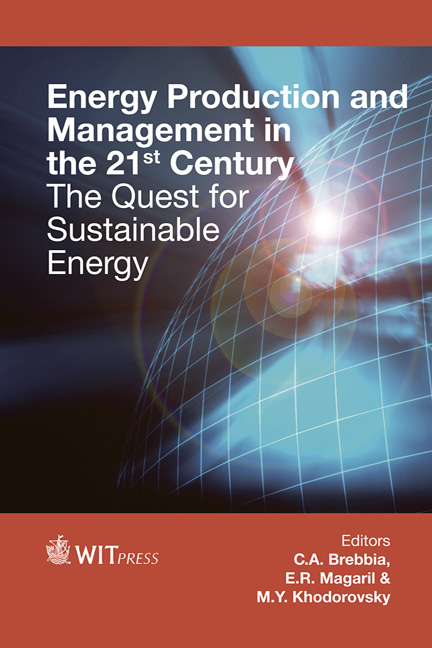Energetic Production Configuration: Its Meaning From An Environmental Point Of View
Price
Free (open access)
Transaction
Volume
190
Pages
12
Page Range
425 - 436
Published
2014
Size
1,364 kb
Paper DOI
10.2495/EQ140411
Copyright
WIT Press
Author(s)
D. Panepinto, G. Genon & F. Viggiano
Abstract
Different configurations for energetic production (only electric and cogenerative) assume a different significance in connection with the different considered criteria. From an economic point of view, in many instances (in particular in the case of the use of a renewable source as fuel), only the electric configuration results are more convenient. From an environmental point of view, a more convenient situation can be obtained with cogenerative configuration. In this paper, the significance of the two different configurations for energetic production has been examined. The production of electric energy only and the combined production of electric and thermal energy have been evaluated from an environmental point of view. In order to verify the environmental compatibility of the producing plant, three different tools can be used: the environmental balance, the implementation of the pollutant dispersion model and the tool of the externalities evaluation. More in detail, with the tool of the environmental balance it is possible to perform an evaluation of the flux modification at the stack. Anyway, the results of the environmental balance are not a real index of the effective air quality modification: in order to have an idea of this aspect the implementation of a pollutant dispersion model is required. Finally, the evaluation of externalities is a useful tool in order to have an idea of the social weight of the producing plant. In this work, after a description of the procedure that can be adopted in order to verify the environmental compatibility of the energy producing plant, we report on two examples of application of this procedure. Keywords: energy recovery, environmental balance, externalities, dispersion model.
Keywords
energy recovery, environmental balance, externalities, dispersion model.





